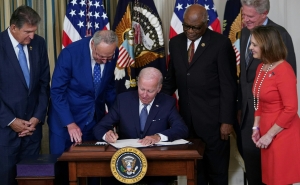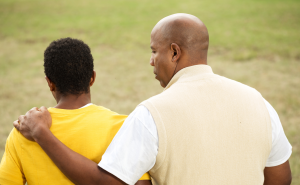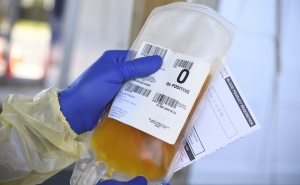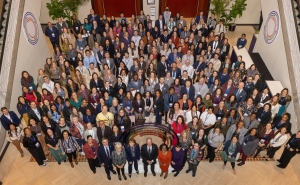Temporary Gun Storage: A Safe Option When Families Must Stay Home

The COVID-19 pandemic has changed people’s routines and interactions in significant ways, not least of which is the amount of time they spend at home.
In households with firearms, safe storage is now especially critical—and is the focus of a new online map developed by students and faculty at the Johns Hopkins Bloomberg School of Public Health.
“While the safe storage mapping project began long before the pandemic, the need for this resource has increased substantially in the last few months,” says Cassandra Crifasi, PhD ’14, MPH, an assistant professor in Health Policy and Management and deputy director of the Johns Hopkins Center for Gun Policy and Research. “As Marylanders experience the impact of COVID-19—socially, economically, mentally, and otherwise—access to firearms becomes an even greater concern for suicides, unintentional injuries, and domestic violence.”
Under Crifasi’s guidance, MD/MPH students Diana Bongiorno and Eric Kramer, who will both earn their MPH degrees this month, organized the project. They collaborated with Marylanders to Prevent Gun Violence, a local organization that focuses on reducing the number of gun-related deaths, to develop and publish the map, which identifies more than 30 gun shops and law enforcement agencies that provide temporary and voluntary safe firearm storage options outside the home for Maryland residents.
“Not all firearm owners have immediate access to storage devices,” says Bongiorno. “The map could potentially save lives by helping to prevent someone in a crisis from having access to a firearm.”
In Maryland, more than 250 people each year die from firearm-related suicides, and over 40% of suicides involve a firearm. Restricting access to a firearm has been proven effective in preventing suicide and unintentional injury.
Research shows that fewer than half of all gun owners store their guns safely. And as gun sales have soared during the pandemic, there may be many new gun owners who don’t know the best safe storage practices. At a minimum, guns should be stored unloaded and separate from ammunition; storing them with a cable lock or in a wall safe provides an additional safeguard. Storage outside the home may be the best option in some circumstances.
In late 2019, Crifasi began working with other state organizations that were launching similar maps based on the one originally developed by the Colorado Firearm Safety Coalition. She enlisted the help of Bongiorno and Kramer, who reached out to firearm dealers and law enforcement agencies to explain their project. If organizations agreed to participate, their addresses and phone numbers were listed on the map.
Bongiorno and Kramer found that many gun shops already offered the service and noted that many were active in suicide prevention efforts.
“It was really powerful to see the vast network of dedicated individuals passionate about suicide prevention, including gun shop owners, suicide prevention experts, and public health leaders," says Kramer.
Earlier this year, Bongiorno and Kramer presented the project at a poster session for state delegates in Annapolis organized by the Johns Hopkins University Homewood Science Policy Group. Their ultimate goal is to make temporary and voluntary gun storage more easily accessible in Maryland, and this map, they say, is an important step.
“Firearm dealers and law enforcement agencies play a powerful role in efforts to prevent suicide and protect the community from firearm-related injuries,” says Bongiorno. “We would be happy to speak to any organization considering being listed on the map.”
Businesses interested in being listed as a safe storage location may contact mdsafegunstorage@gmail.com.
Caitlin Hoffman is the communications associate for the Department of Health Policy and Management and communications director for the Johns Hopkins Center for Gun Policy and Research at the Bloomberg School.





